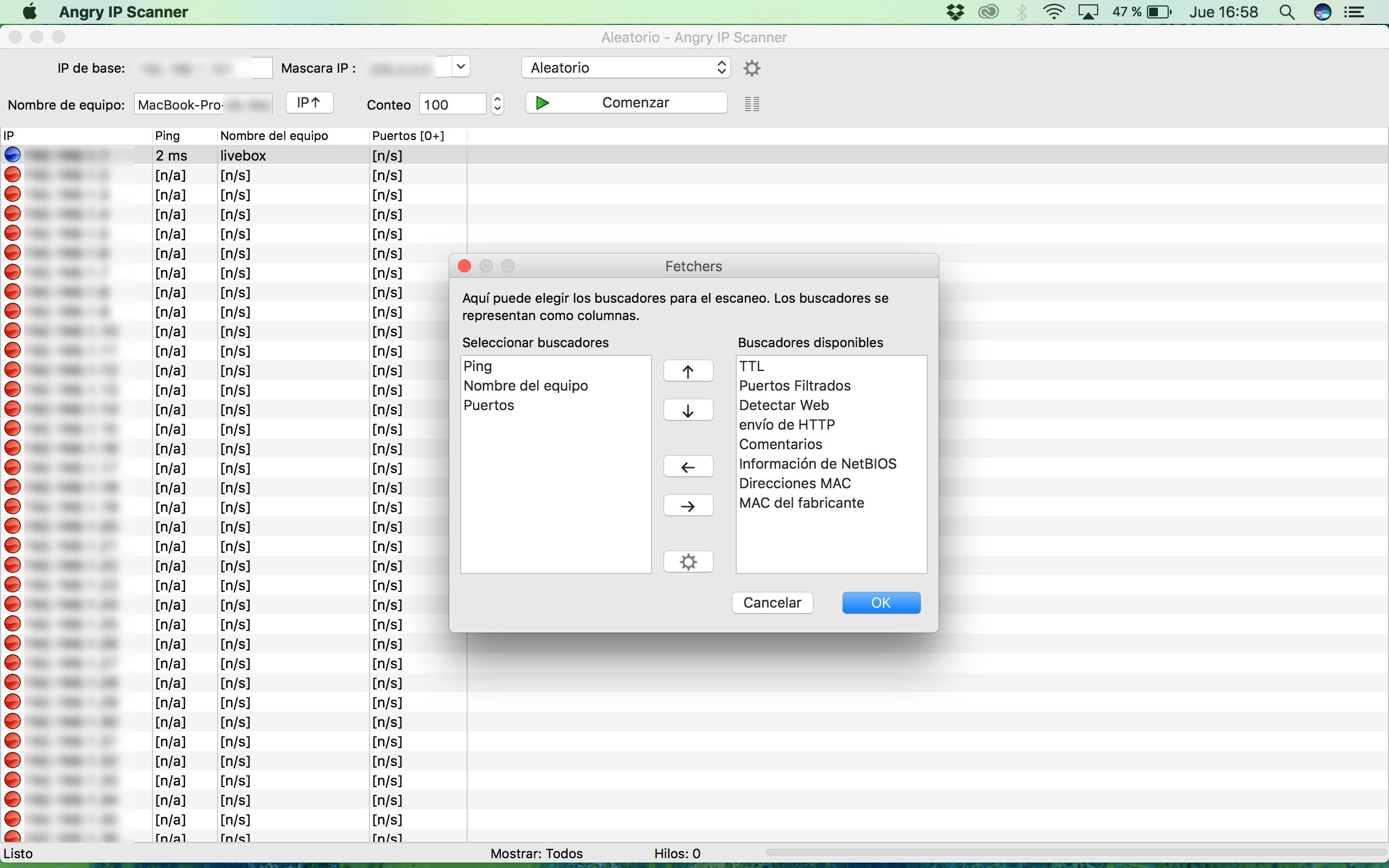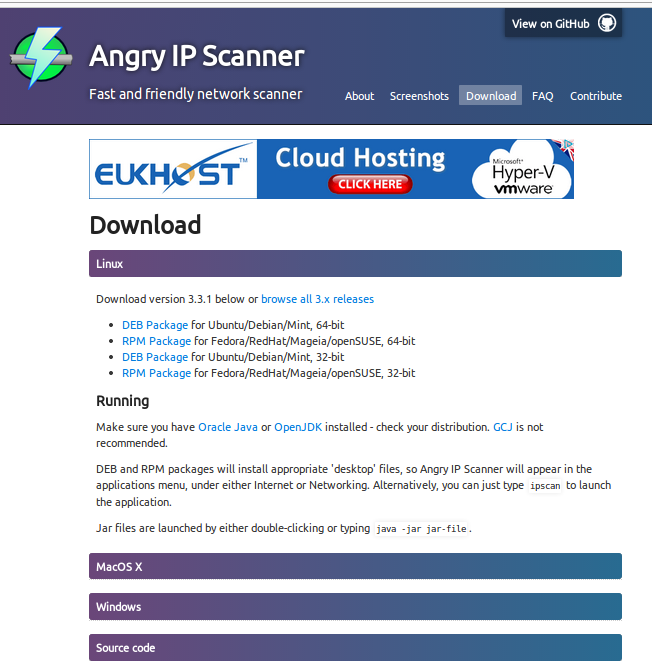

- #Angry ip scanner port how to#
- #Angry ip scanner port android#
- #Angry ip scanner port download#
- #Angry ip scanner port mac#
- #Angry ip scanner port windows#
If either the connection can be established or TCP RST packet is received (meaning that port is closed), Angry IP Scanner knows that host actually responds and can be considered as alive. Timeouts This problem can always be ‘fixed’ by changing some scanning preferences, like timeouts and number of scanning threads.
#Angry ip scanner port windows#
This method tries to connect to some TCP port that is unlikely to be filtered (e.g. Why is scanning slow on Windows Sometimes Angry IP Scanner can not detect open ports and will consider them as filtered.
For computers, this method can actually sometimes work even better than ICMP Echo, because some administrators/firewalls tend to block ICMP Echo packets, but allow UDP packets to travel freely. Some network devices (such as home routers) don’t implement UDP protocol at all and therefore appear as dead. No response can mean that the UDP port is open (very unlikely) or the host is dead. If the packet is reseived, Angry IP Scanner knows that the host is actually alive and records the roundtrip time. If the port is closed, the host must send the ICMP packet back informing of the fact. The method works by sending out UDP packets to some UDP port very unlikely to be open. Angry IP Scanner will detect the absence of privileges and use this method automatically. Next is to specify a Port so that the Angry IP Scanner will ping each IP to find out if that port is open, Go to Tools > Preferences > Ports tab. This pinging method is preferred when you don’t have administrative privileges. It can scan IP addresses in any range as well as any their ports. This should provide similar performance to pure ICMP Echo pinging on other platforms. Angry IP scanner is a very fast IP scanner and port scanner. This is Windows-only pinging method to compensate for absence of Raw Sockets (see above).Īngry IP Scanner can now use the previously undocumented ICMP.DLL library to send ICMP Echo packets from Windows machines. However, starting with Windows XP SP2, Microsoft has removed Raw Socket support from consumer versions of Windows (Server editions still have them), so this method will not work on Windows anymore. If Angry IP Scanner runs without these privileges, this method can’t be used.Īngry IP Scanner implements this using the Raw Sockets. However, as it involves sending of ICMP (Internet Control Message Protocol) packets, it requires administrative (or root) privileges. This is the same method used by the ping program. In the same place you can also select the pinging method. This behavior can be changed in the Preferences dialog, Scanning tab. IP’s that respond will show up with blue icons, and you’ll also see pingtime and hostname details.Angry IP Scanner implements several different methods of detecting alive hosts (pinging).Īs a rule, if hosts don’t respond to pings, they are considered dead and therefore not scanned further. A list of results will show up as per below. Note that the port range above is the well known port range that most services are running on. Also, you can choose a random scanning or choose a. The command above will probe remote IP 192.168.0.5 for open ports in the range of 1-1024. To scan your subnet, simply change the last digit in the first IP sequence to 1, and the last digit of the second IP sequence to 255 and click Start. Run Angry IP from the applications menu or type ipscan in a terminal, also you can run ipscan as root. From there you can discover active ports and protect yourself from exploitation. Port scan is basically an attack (or probe) that sends client request to a range of server port addresses on a particular host. The IP entered in by default will be that of your own PC. Before using an application like Angry IP, it would be good to learn a little about port scan and the meaning behind the word. #Angry ip scanner port android#
> o Yet, the Android Port Authority port scanner appears to have done so. Let’s assume you want to scan your local network to see what devices are connected. Windows AngryIP ipscan tool didnt correctly identify the open ports. Unless you are running a version of Windows earlier than Vista SP2, you need not worry as any connection limitations have been removed.Īfter this initial window, there will a short list of steps that explain some basic terminology and how the program itself works.
#Angry ip scanner port how to#
When you first open Angry IP Scanner, you will likely be asked if you want to find out how to get around the limitations of certain versions of Windows in order to increase scanning speed. Also, do note that you will need to have Java installed (for the Windows version, it should just run on the Mac, and Linux has some other dependencies).

Do keep in mind that this guide is written for Windows, but all that is said here should apply to the other versions.

#Angry ip scanner port mac#
The application is developed in java, so it is cross platforms compatible and works with Windows, Mac and Linux.
#Angry ip scanner port download#
The first step is to download the appropriate version for your operating system from this page.







 0 kommentar(er)
0 kommentar(er)
